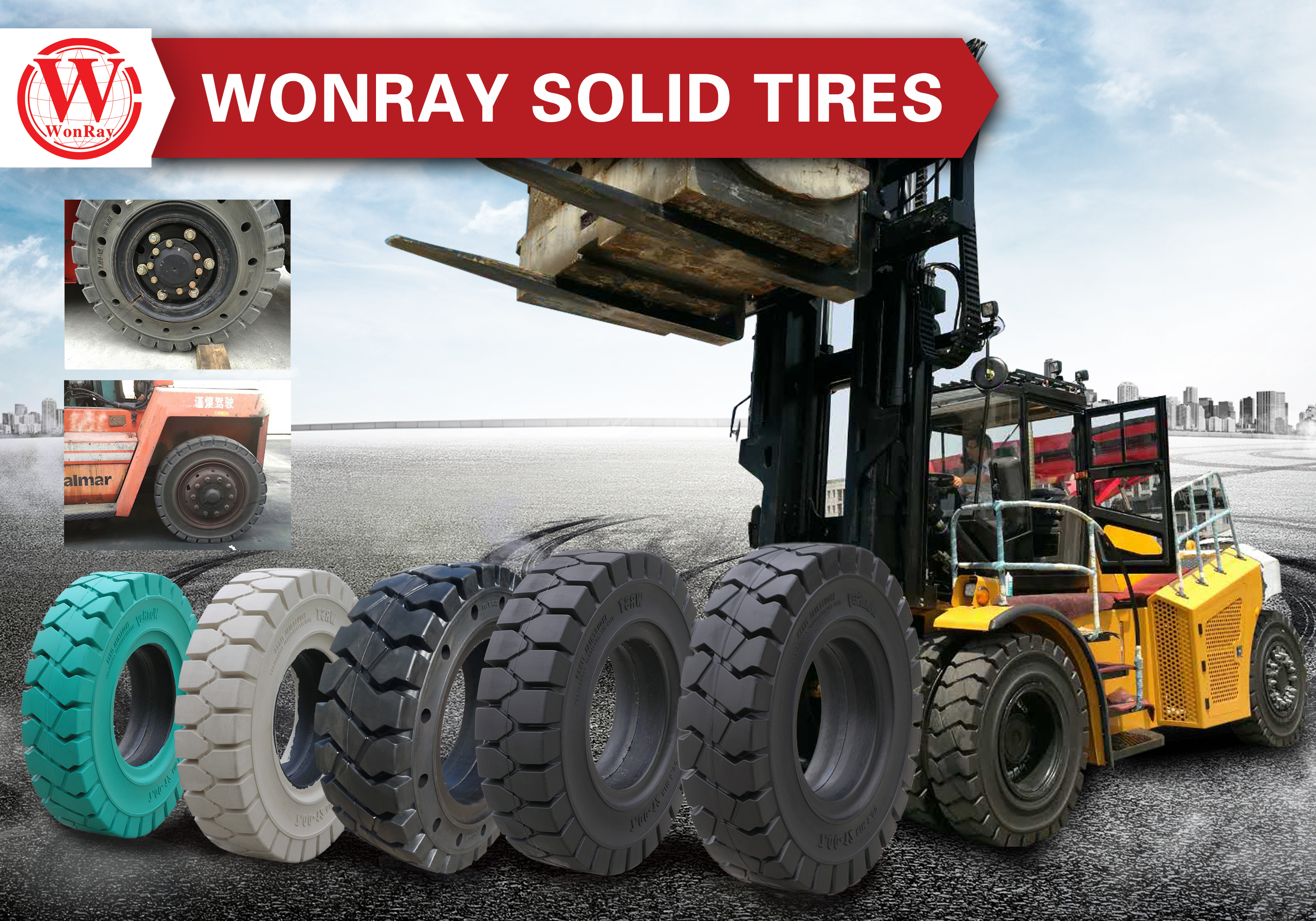In a commercial environment, the forklift is the workhorse of logistics, material handling, and warehousing. Its efficiency and safety are paramount, and at the heart of its performance lies a critical, yet often overlooked, component: the forklift tire. Selecting the right tire isn’t just about a good fit; it’s a strategic decision that directly impacts operational costs, productivity, and, most importantly, the safety of your team and your inventory. This guide will help B2B professionals make an informed choice to optimize their fleet’s performance.
The Different Types of Forklift Tires and Their Applications
Choosing the right tire starts with understanding the different types available. Each is designed for specific environments and tasks, and using the wrong one can lead to premature wear, reduced efficiency, and safety risks.
- Pneumatic Tires: Similar to car tires, these are filled with air and offer a cushioned ride. They are ideal for outdoor use on uneven surfaces like gravel, asphalt, or unpaved yards. They provide excellent traction and a smoother ride for the operator, reducing fatigue.
- Solid Tires (or Cushion Tires): Made of solid rubber, these tires are puncture-proof and don’t require air. They’re best suited for indoor applications on smooth, even surfaces like warehouse floors. Their durability and resistance to sharp debris make them a popular choice for high-risk environments.
- Polyurethane Tires: Typically used for electric forklifts and pallet jacks, these tires are a type of solid tire made from polyurethane. They are extremely durable, have low rolling resistance, and are excellent for indoor, clean warehouse floors where floor protection is a priority.
Key Factors to Consider When Selecting Your Forklift Tire
Making an informed decision about your forklift tire requires a careful evaluation of your specific operational needs.
- Operating Environment: Is your forklift used primarily indoors on concrete floors or outdoors on uneven surfaces? This is the most crucial factor in deciding between pneumatic and solid tires.
- Load Capacity and Weight: Ensure the tire’s load rating matches or exceeds the maximum weight your forklift and its cargo will handle. Overloading tires can lead to failure and serious accidents.
- Tire Life and Durability: Consider the expected service life and durability. Solid and polyurethane tires, while offering less cushioning, last much longer than pneumatic tires in indoor, high-debris environments.
- Cost and Maintenance: While pneumatic tires might be cheaper initially, they are susceptible to punctures, which can lead to downtime and repair costs. Solid tires have a higher upfront cost but offer zero maintenance in terms of air pressure and punctures.
- Tread Pattern: The tread design affects traction and stability. A smooth or non-marking tread is ideal for indoor use, while a deeper, more aggressive tread is necessary for outdoor, muddy, or rough terrain.
Conclusion: A Strategic Component of Operational Success
A forklift tire is a fundamental component of your material handling fleet. The decision to choose the right one is a strategic investment in the safety, efficiency, and longevity of your operations. By understanding the different types of tires and carefully assessing your business’s specific needs, you can select the perfect tire to ensure your forklifts are not just running, but performing at their best, day in and day out.
Frequently Asked Questions
Q1: How can I tell when it’s time to replace my forklift tires? A1: For solid tires, look for wear indicators molded into the tire. When the tire wears down to this line, it’s time to replace it. For pneumatic tires, check for excessive tread wear, cracks in the sidewalls, or frequent air leaks.
Q2: Are non-marking tires necessary for all warehouses? A2: Non-marking tires are specifically designed for warehouses or facilities with light-colored floors. They prevent the black scuff marks that traditional black rubber tires leave behind, helping to maintain a clean and professional appearance.
Q3: Can I switch between pneumatic and solid tires on the same forklift? A3: No, you can’t. Forklifts are designed for one specific type of tire. The chassis, suspension, and overall weight distribution are engineered to work with either pneumatic or solid tires, but not interchangeably.
Post time: 11-08-2025

